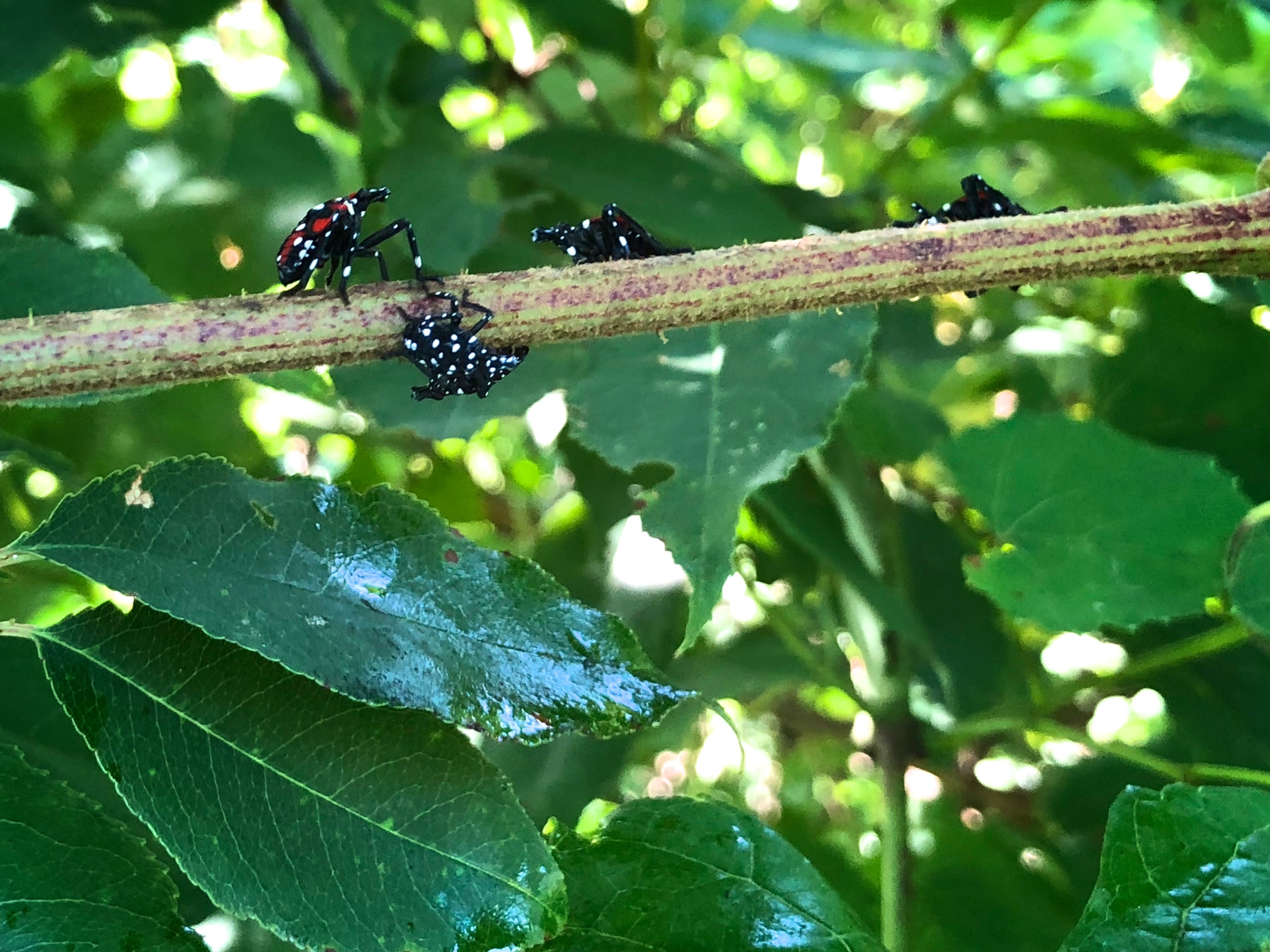Crow’s Nest: 4th instar of Spotted Lanternfly
By Daniel Barringer, Preserve Manager.

Over the last few days we’ve seen the next stage in the larval form of the invasive spotted lanternfly (Lycormis delicatula). The first three instars were already common throughout the preserve and abundant in a couple places (each instar a little larger than the previous one). Keep in mind that we didn’t see any nymphs last year—only the adults that we observed starting in September. And also remember that we don’t have any of the preferred host tree—ailanthus—present on the preserve, though it is widespread in the region.
The fourth instar of the insect (above, left) adds orange coloration to the white spots and is bigger than the earlier nymphs which are also present in the photo above. They are extremely fast jumpers; it’s very difficult to catch them. For this photo, they scuttled behind the vine stem to avoid me; I put my hand behind the stem to cause them to scuttle back into view.
Note also the shiny exudate on the leaves below them. Since the lanternflies pierce stems and bark and drink the sap of trees and vines—mostly water and not particularly nutrient-rich—they need to drink a lot of it. Much of the undigested water and some of the sugars pass through them making a sticky residue called (somewhat euphemistically) honeydew, which falls on plants below. Then a fungus called sooty mold colonizes the sweetish honeydew and this turns leaves black and may affect these other plants’ photosynthesis.
We’re also having a bad year for scale insects on tuliptree (Liriodendron tulipifera)—these tend to go in cycles—and they leave a great deal of honeydew under them. But if you see honeydew or sooty mold and you’re not under a tuliptree chances are it is from spotted lanternflies.
